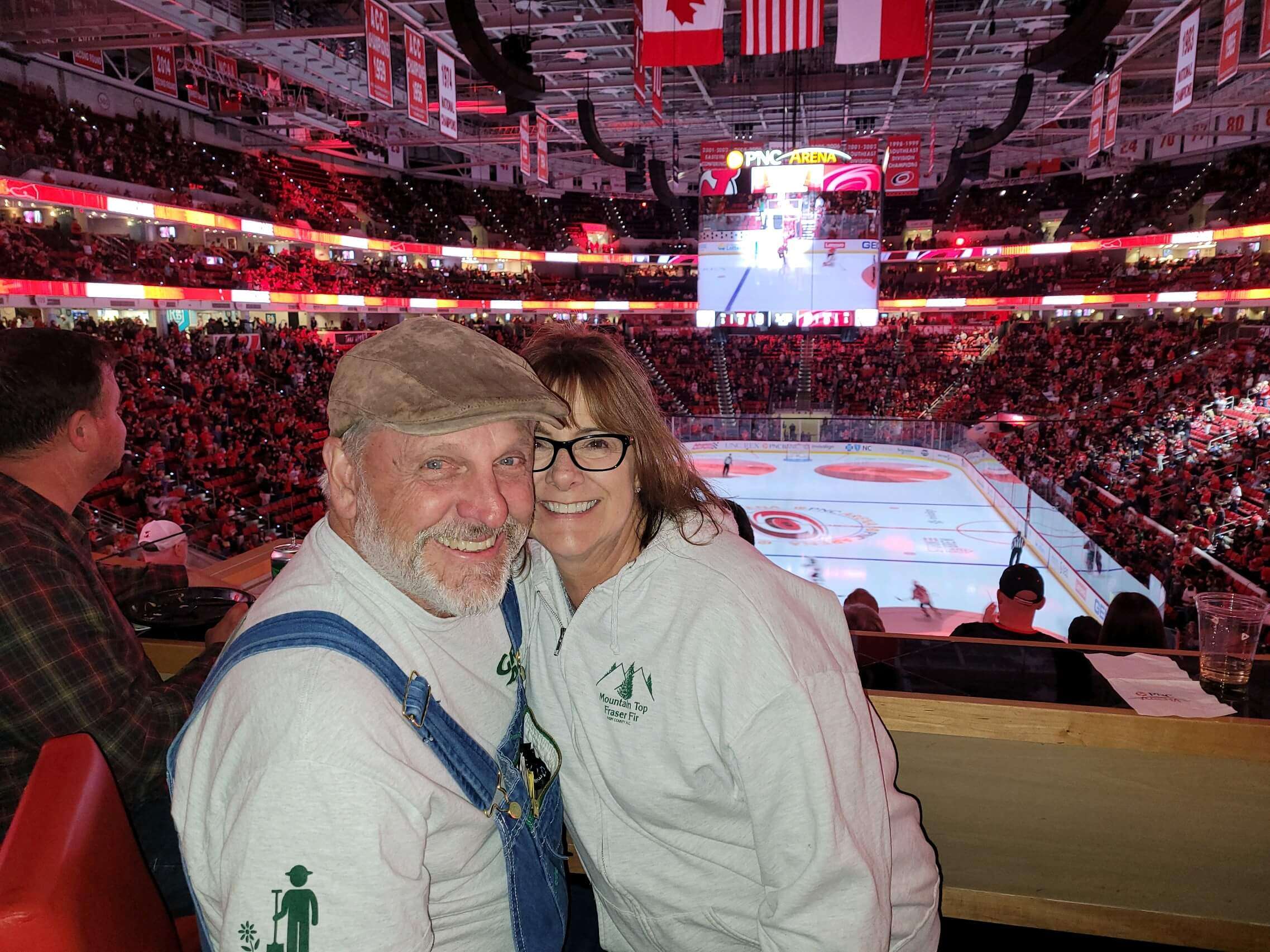
North Carolina is one of our favorite places to be, and we’re there often, most recently for another leg of filming that included a visit to the brand new and gleaming Steve Troxler Agricultural Science Center of the North Carolina Department of Agriculture and Consumer Services (NCDACS) in beautiful Raleigh April 27.
The $150 million facility brings all of NCDACS research facilities under one roof and just officially opened in March. It’s the finest of its kind in the world.
Getting there was the hard part, at least for me. We were having lunch at the North Carolina State Farmers Market restaurant (another Season 2 story coming up!) with Larry Smith, our dear, dear friend and world-famous North Carolina Christmas Tree Farmer. We were meeting the crew at the Science Center; lunch ran long and Chip had to leave early because they can’t start without him.
So Larry and I paid the bill and then kind of drove around in circles trying to find the Agricultural Center for awhile (my fault actually — I did not have the location setting turned on on my GPS!) But to my relief, Larry’s country navigating got us there.
When we finally arrived we had to buzzed into the facility because a very important person was there to be interviewed – Steve Troxler, long-time North Carolina Commissioner of Agriculture and the namesake of the new Science Center.
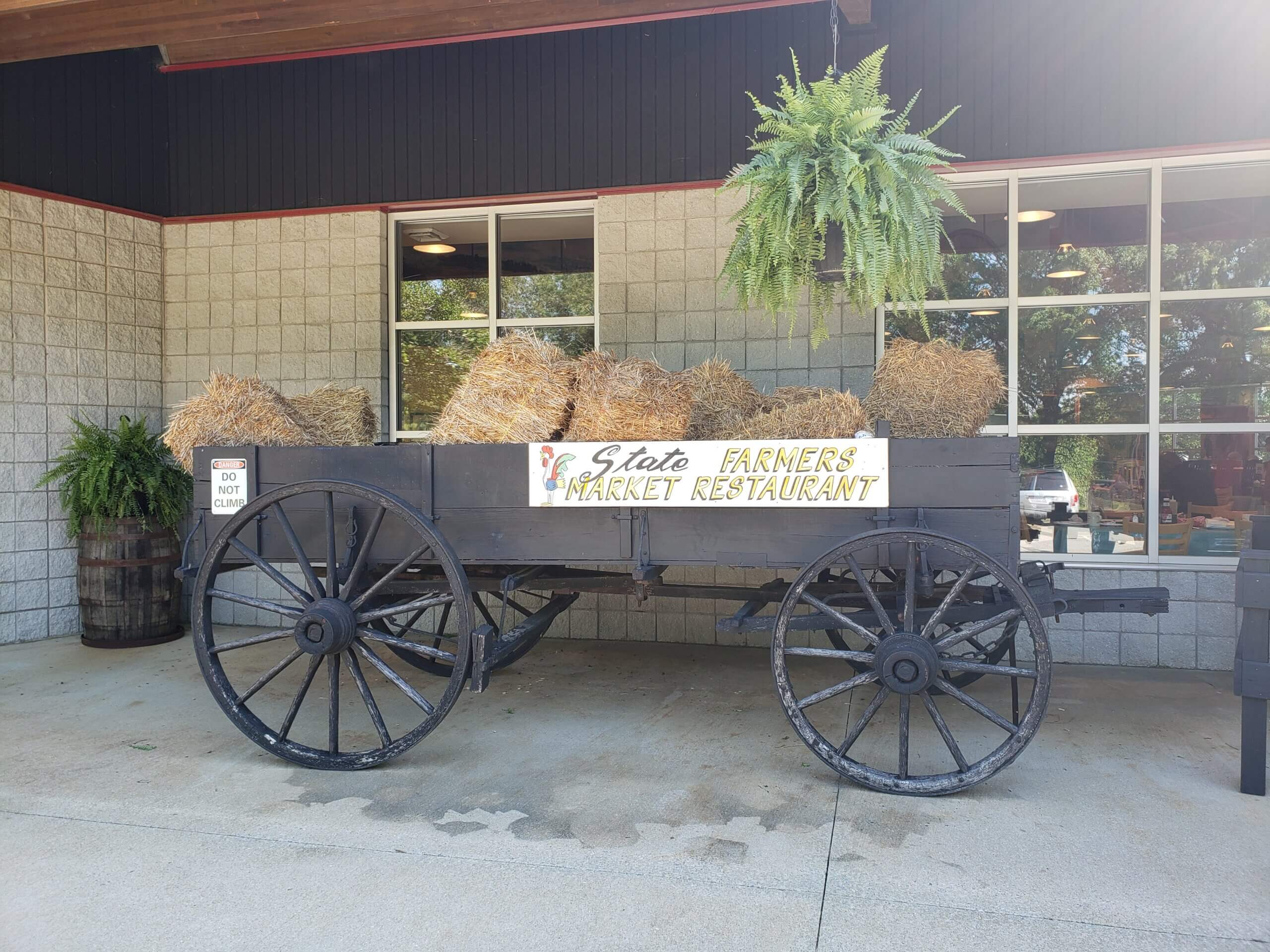
We met Commissioner Troxler in the lobby of the Agricultural Center. I think I may have referred to him as Senator when we were finally introduced (I get nervous sometimes). He is an extremely passionate and humble man, which became quite obvious during the interview.
One of the first things Chip and Commissioner Troxler discussed was the Science Center being named after him. He was very sincere with his answer and I got the impression he really felt he did not deserve that honor. But, believe me, he really does.
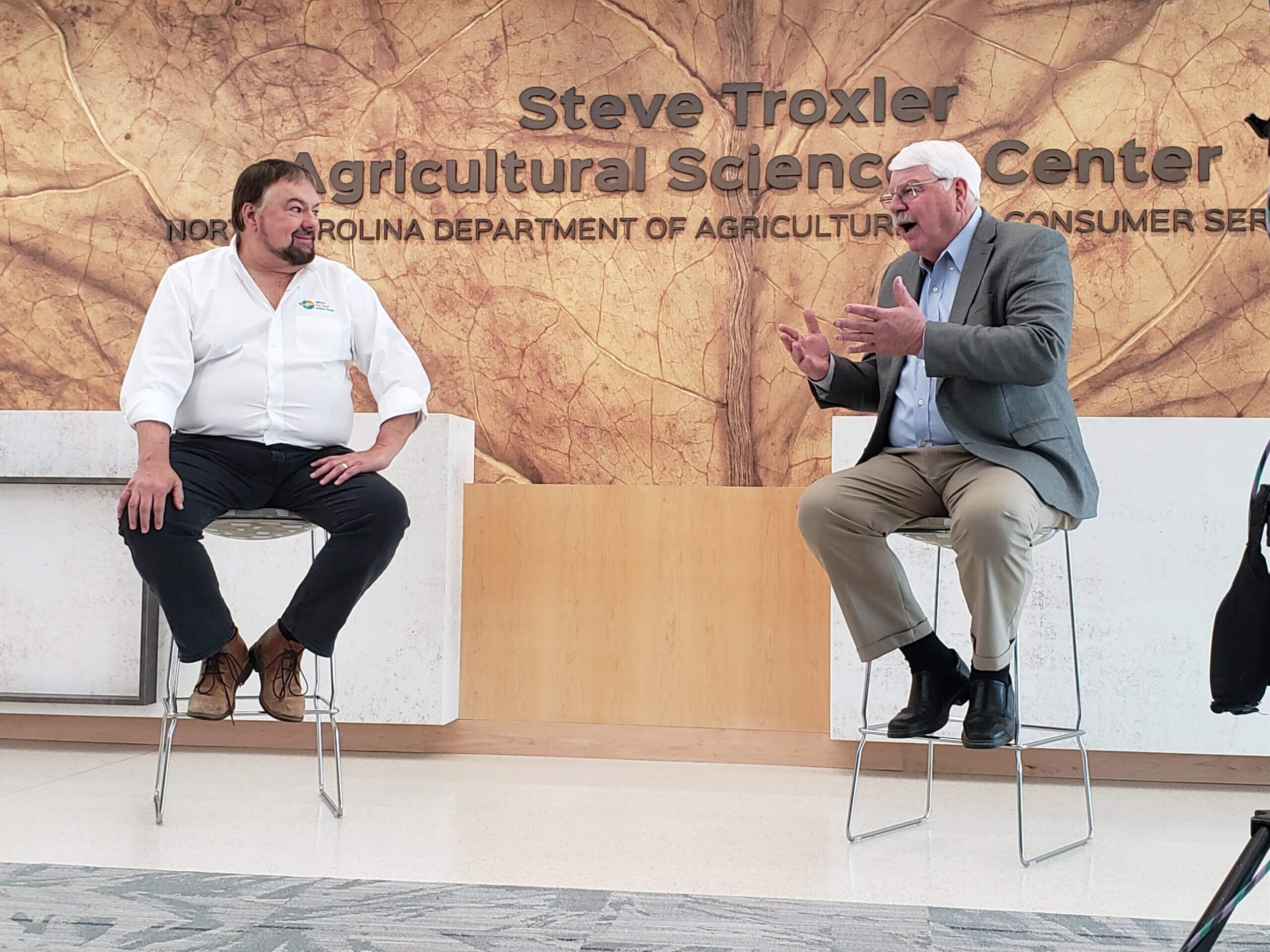
WARNING: SOME OF THE INFORMATION PRESENTED IN THIS SECTION MAY BE UNSUITABLE FOR SOME READERS – IT CONTAINS GRAPHIC DESCRIPTIONS OF EVENTS THAT TAKE PLACE IN THE NECROPSY LAB!!!
Even though I am a Registered Nurse by trade, I did not know the definition of “necropsy” so I had to look it up. Basically, per a Google search, it is “an examination of an animal to determine the cause of death or the extent of a disease.”
My question to myself — and I ask myself a lot of questions — was how did this fit into agriculture? Well when I thought about it – if an animal eats diseased, contaminated grass or feed they would get sick. If there’s a sickness in one farm animal, that might be something that could spread to a herd. To continue the cycle, if we ate the animal we could possibly get the same disease or at least sick. Okay, so now the part where the above disclaimer comes into play:
Before we entered the necropsy lab we had to put on plastic boots over our shoes and goggles in a connecting locker room that has “safe” and “contaminated” areas to keep things under control. Once we were suited up, we headed into the lab.
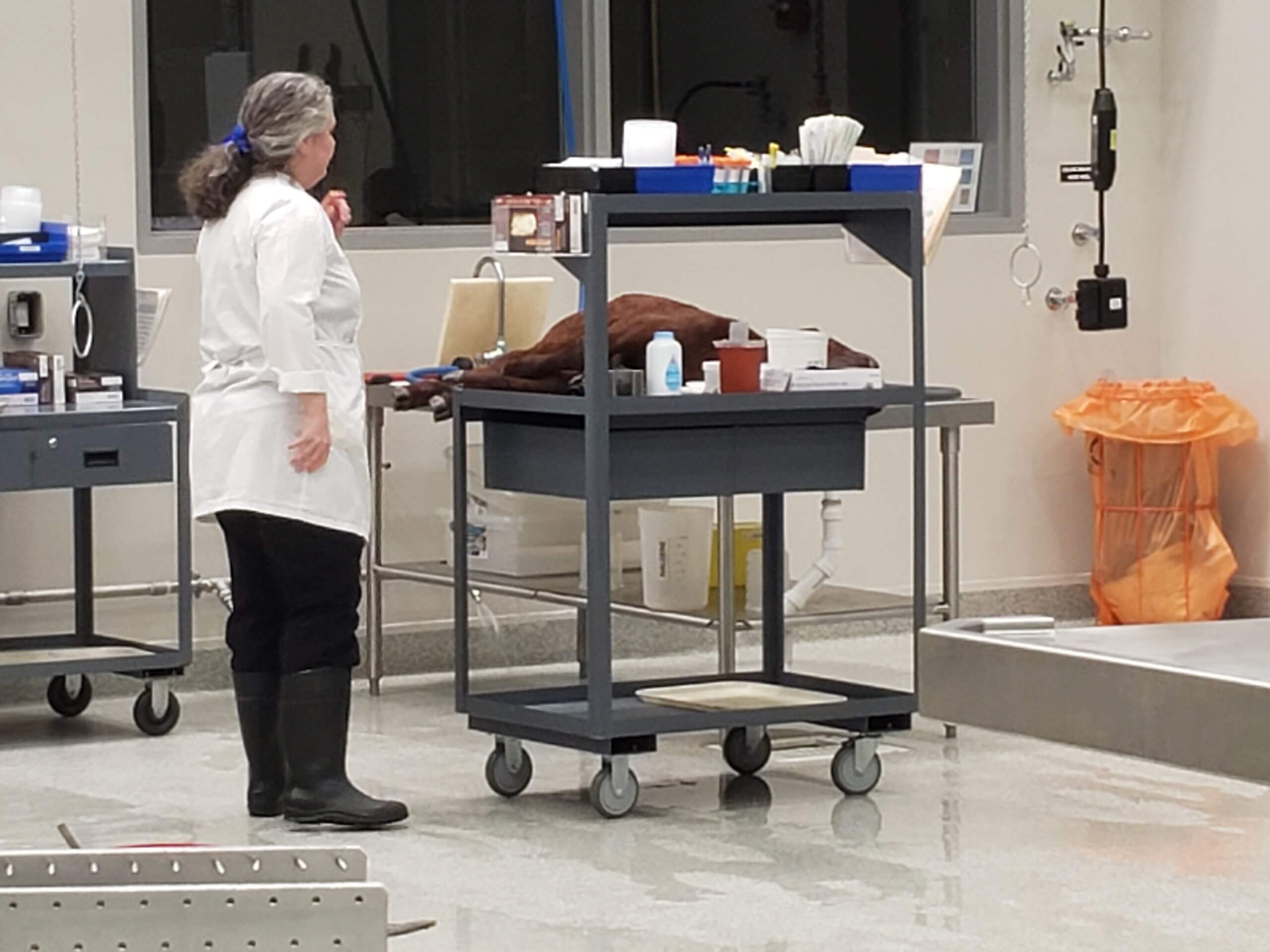
Well. I was not prepared and neither was the rest of the crew for the smell. Those of us that had masks quickly put them on. I unfortunately did not. This was a smell I knew, though nowhere near this intense, from my nursing days in the hospital morgue. When I looked around the room and saw what was happening, tears began to run down my cheeks. Styles Wilson, our Associate Producer, told me to leave if I needed to.
The room was immense, extremely clean, and had multiple examination tables around it. There was what appeared to be a dismembered animal on a table in the middle of the room. From a distance I could not tell what kind of animal it was, but there was a hoof sticking out. Okay, stomach turn Number One and more tears. On one wall there was a huge garage door. This door was actually used to bring in the animals to be studied.
Our interview was going to take place with the physician who ran the lab, but she had another animal coming in and had to excuse herself. The garage door opened and, like you would see in a butcher shop, an animal came in wrapped up in a plastic bag supported by chains. I would imagine it was the physician’s assistant who took the carcass off the chains and placed it on an examination table.
There were actually two animals – a calf and surprisingly, a house cat (the state studies household pets to make sure there are no pandemics or infections spreading in that population). And I later found out the animals must be dissected as soon as possible to obtain the best samples to be studied. Hence the reason the physician had to excuse herself.
But the show must go on and Chip was able to interview Heather Overton, Assistant Director of Public Affairs with the NCDACS. Her knowledge of what goes on in the lab was amazing. But, the whole time the interview was taking place the sound of knives being sharpened was heard throughout the lab and probably the interview.
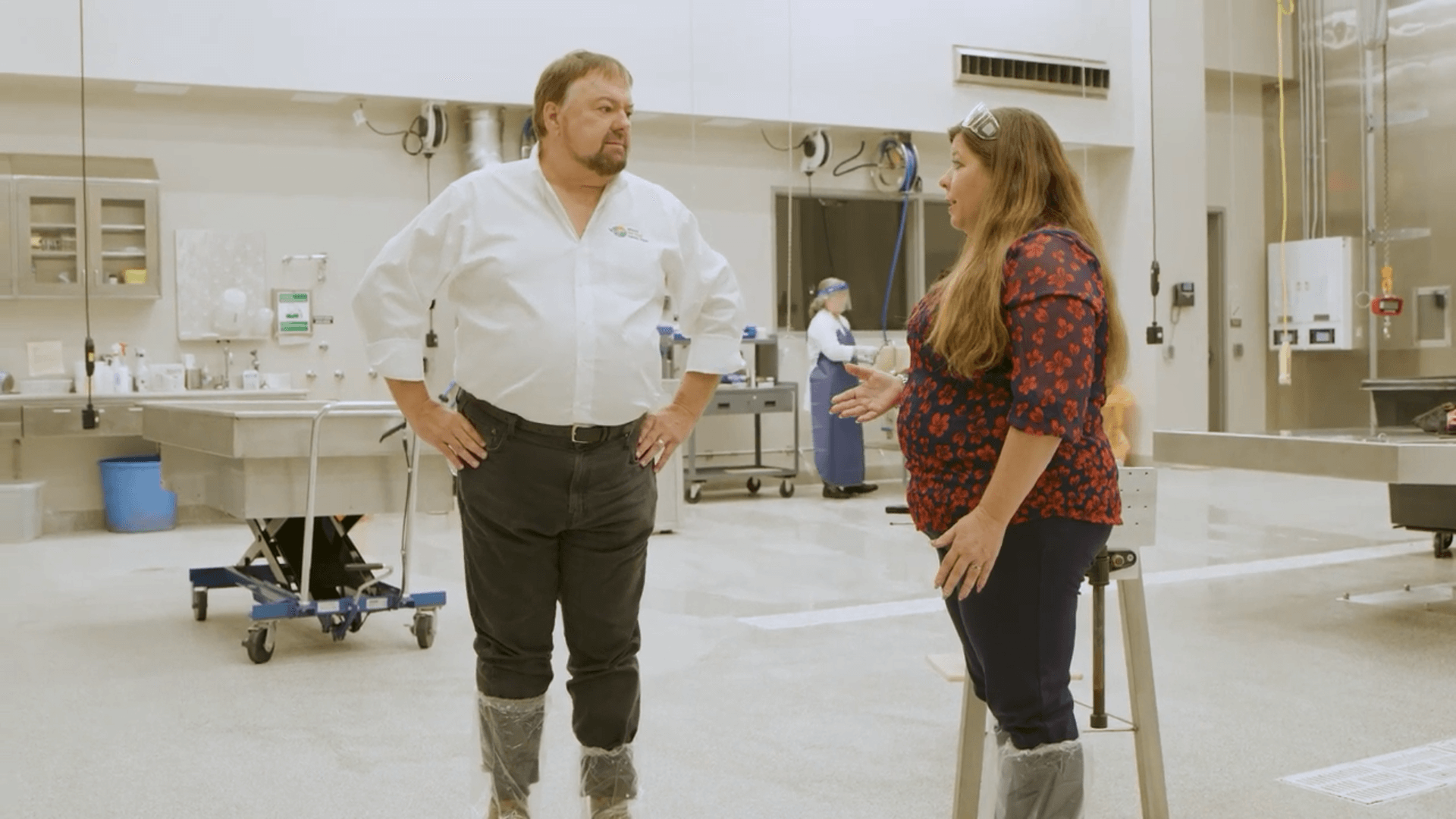
It is a sound we have all heard, but in this case it just made chills run up your spine. Larry said to me, “She is going to go for the jugular.” Larry was wrong — as we were walking out I turned and saw the knife begin to open up the belly of the animal. Stomach turn Number Two and I walked out as fast as I could.
When I thought about it later on I have to give kudos to the people who work in that lab. They are the first line of defense for our animal populations — without them we would likely all have to become vegetarians.
Okay, Enough Is Enough So Let’s Move On…
Next came the Fuels Lab. A highly scientific looking area with a lot of equipment, which to someone who does not work there would be awesome to play with. The interview took place with Marcus Helfrich, Program Manager with NCDACS, which can be seen in the episode.
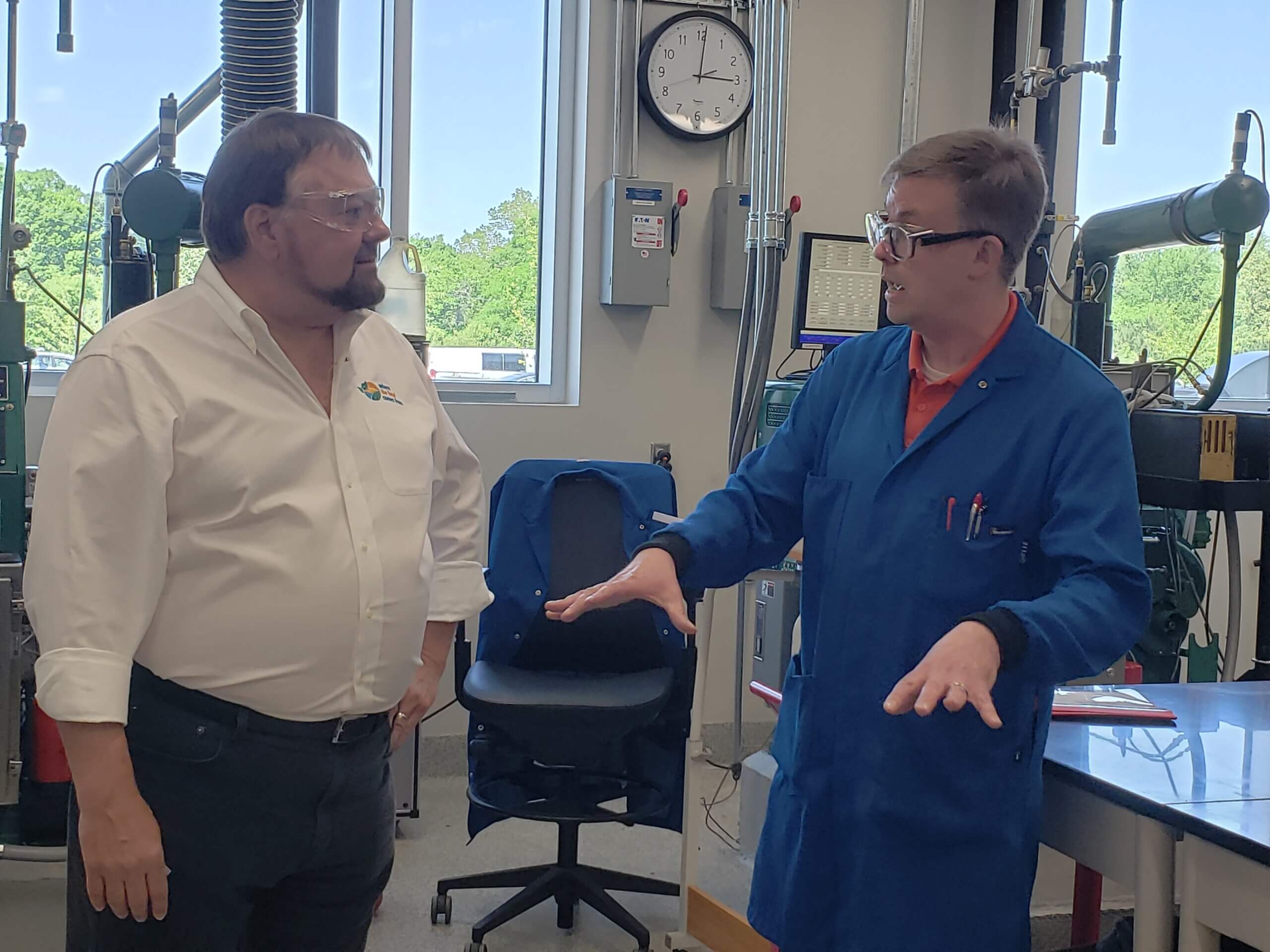
Remember what I said about the equipment being fun to play with? I will give you three guesses who tried it and the first two don’t count (another favorite saying of mine). Donning a lab coat and goggles our host instantly began playing “mad scientist” with everything in the lab. Marcus believed Chip was actually messing with the equipment and quickly intervened. It was pretty funny, but I will bet a dollar he was glad to see us leave the lab.
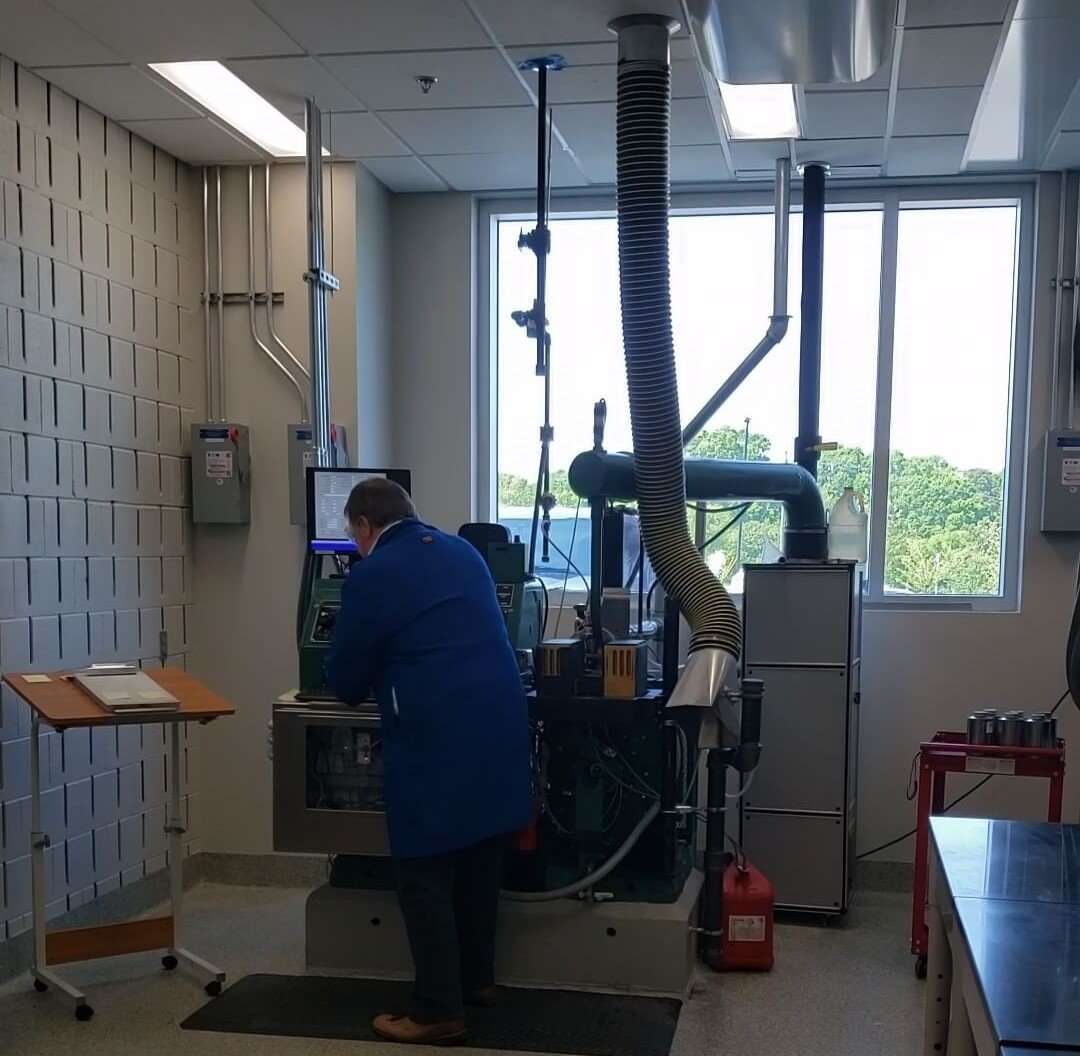
Onto the Inorganic Chemistry Lab. The lab was filled with beakers and pipets which I really wanted to play with. But it was time to meet Naomi High, Chemistry Manager with NCDACS. Naomi was extremely hesitant about being on TV, but Chip had her feeling comfortable in no time. It was at the end of the day so not too much was going on.
Which, I might add, was why I was allowed to go into certain areas without wearing goggles. She explained to us what went on in the various rooms. She took us to one room that had a huge drying oven. The oven contained what looked like dried grass. Well I was close, it contained silage. Again, back to Google. Silage is a type of fodder which is hay, corn or grass used to feed animals. So why was the silage in the ovens? Long story short, once dried it can be analyzed for nutritional content to see what else may needed to make the feed more nutritionally sound for the animals. Which leads us back to the food cycle I talked about earlier. I find it truly amazing how this all ties in.
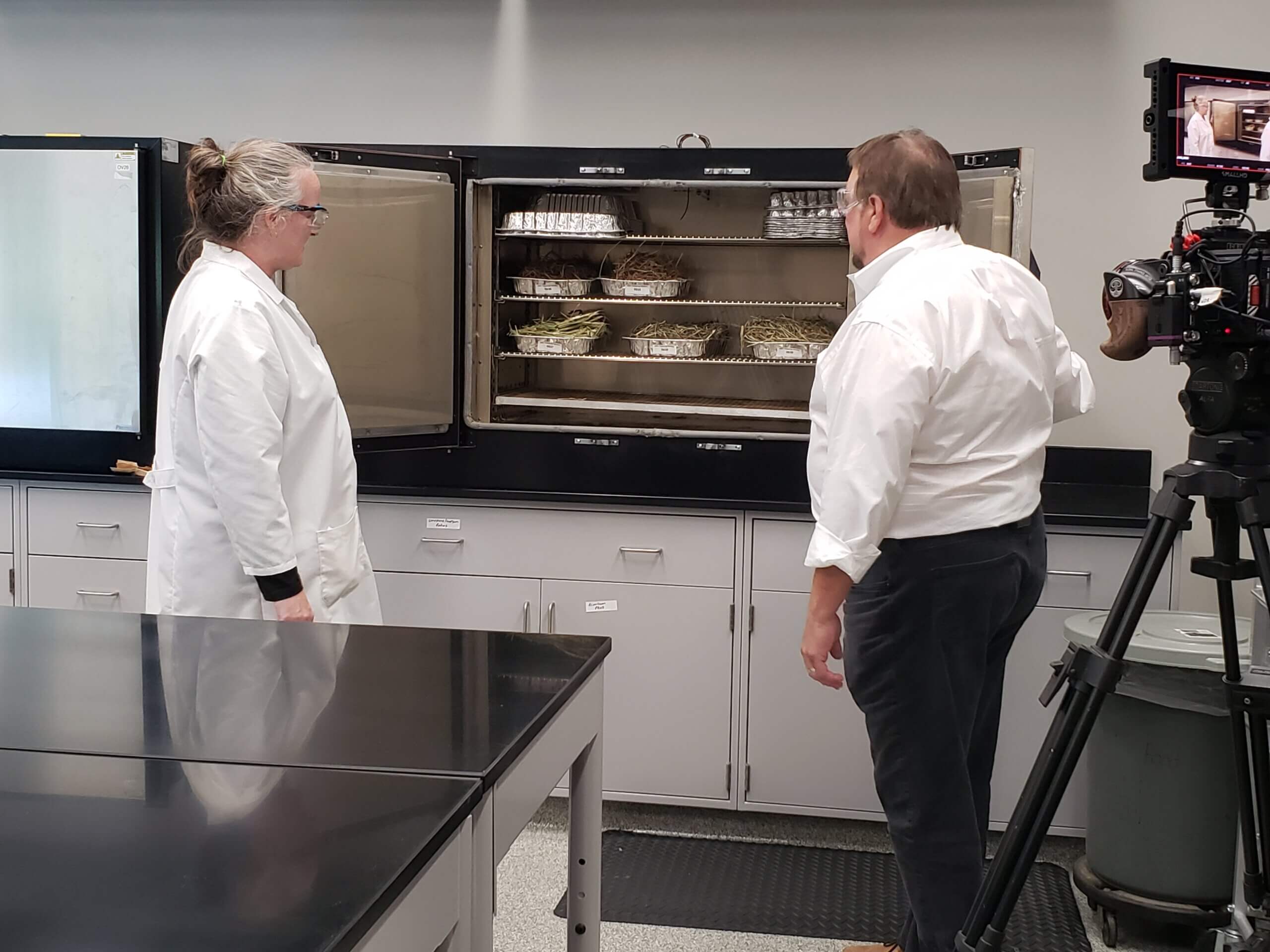
The tour continued and Heather provided more information about how the facility worked. Her last interview took place in a room with multiple cubicles. While the interview was going on I was checking out the plants on the desks. One desk had plants with multiple watering bulbs. To someone who has so many plants this was very interesting, sometimes I do forget to water them all.
Well, the watering bulbs turned out to be some of the equipment from the inorganic lab. Too bad I could not find my way back to grab some, but I probably would have gotten in trouble with Naomi. Oh, I forgot to tell you — Naomi did scold Chip for sitting on a table in the inorganic lab, among other things, which you will see in the episode.
The closing of the show took place in the atrium, which is an impressive sight. It is a two-story area with remarkable views and a lot of windows. Our friend Larry Smith, as a North Carolina farmer who benefits from the work of the Science Center, joined Chip for the closing.
Chip had originally planned a different ending to the show. But Larry did such an incredible job summoning up the tour and the importance of the Steve Troxler Center from his viewpoint that it actually became the closing of the show. So…
Thank you Larry!
